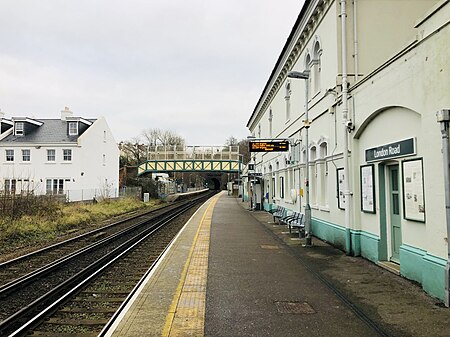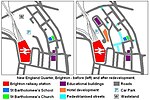London Road (Brighton) railway station
David Mocatta railway stationsFormer London, Brighton and South Coast Railway stationsRailway stations in Brighton and HoveRailway stations in Great Britain opened in 1877Railway stations served by Southern ... and 1 more
Use British English from March 2017

London Road (Brighton) railway station is a railway station located in Round Hill, an eastern suburb of Brighton in East Sussex. It is the first intermediate station on the Brighton branch of the East Coastway Line, 57 chains (1.1 km) down the line from Brighton station. The station is managed by Southern, who operate all services on the line. Despite its name, the station is not located on London Road, which passes some 400 yards (370 m) southwest of the station and bears the name Preston Road at the nearest point.
Excerpt from the Wikipedia article London Road (Brighton) railway station (License: CC BY-SA 3.0, Authors, Images).London Road (Brighton) railway station
Shaftesbury Place, Brighton Round Hill
Geographical coordinates (GPS) Address Nearby Places Show on map
Geographical coordinates (GPS)
| Latitude | Longitude |
|---|---|
| N 50.836666666667 ° | E -0.13638888888889 ° |
Address
London Road
Shaftesbury Place
BN1 4QQ Brighton, Round Hill
England, United Kingdom
Open on Google Maps










